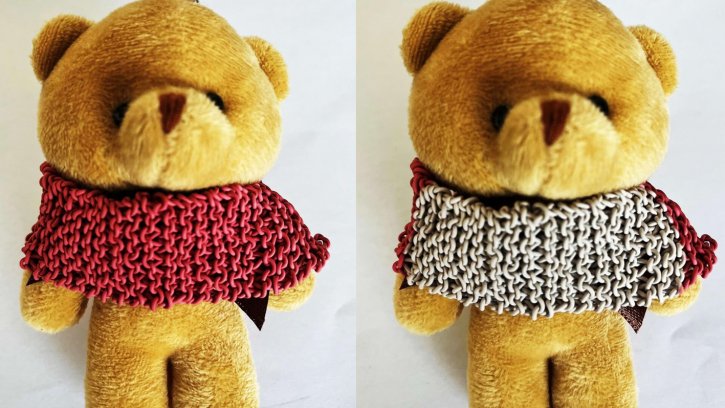ATEX expands meltblown capacity
Research/Development/Education
Wet-spun route to new functionality
.Combination of polyaniline and polydopamine nanoparticles enhance light absorption.

19th February 2025
Innovation in Textiles
|
Waterloo, Ontario, Canada
A new kind of fabric developed by researchers at the University of Waterloo in Ontario, Canada, can heat up when exposed to the sun as a result of nanoparticles embedded its fibres.
Wearable heated clothing typically relies on metals or ceramic heating elements to heat up and an external power source, which could pose safety risks for users.
By contrast, the new fabric incorporates conductive polymer nanoparticles that can heat up to 30 degrees Celsius when exposed to sunlight. The design requires no external power and can also change colour to visually monitor temperature fluctuations.
“The magic behind the temperature-sensitive colour change lies in the combination of nanoparticles embedded in the polymer fibres,” said Yuning Li, a professor at Waterloo’s Department of Chemical Engineering.
The fibre is created using a scalable wet-spinning process, combining polyaniline and polydopamine nanoparticles to enhance light absorption and improve photothermal conversion. Thermoplastic polyurethane serves as the spinning matrix, while thermochromic dyes enable the reversible colour-changing feature. The resulting fibre can be woven into fabric for wearable applications.
In addition to its temperature-changing capability, the new fabric can stretch out by as much as five times its original shape and withstand as much as two-dozen washings while still maintaining its function and appearance. Its reversible colour-changing ability provides a built-in temperature monitoring feature to ensure the wearer’s safety and convenience.
“We prioritised durability, ensuring the fabric could withstand repeated use and environmental exposure while maintaining its innovative properties,” said Li.
The Waterloo team is exploring more cost-effective alternatives to polydopamine to make the smart fabric technology more accessible. Future developments will focus on scaling the production process and reducing costs without compromising on the fabric’s properties.
Potential applications include aids for cold rescue situations and solar-powered pet clothing.

Business intelligence for the fibre, textiles and apparel industries: technologies, innovations, markets, investments, trade policy, sourcing, strategy...
Find out more












